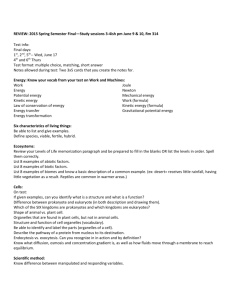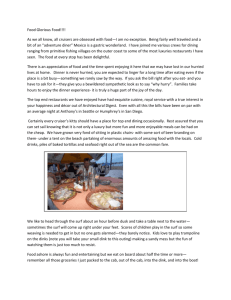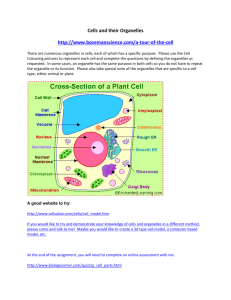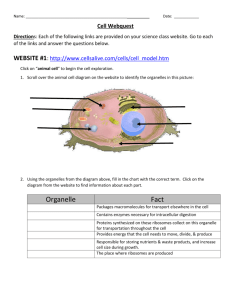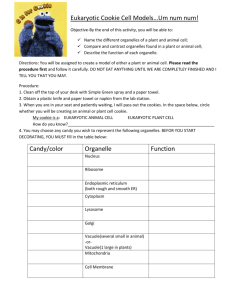Shrinky Dink cells
advertisement
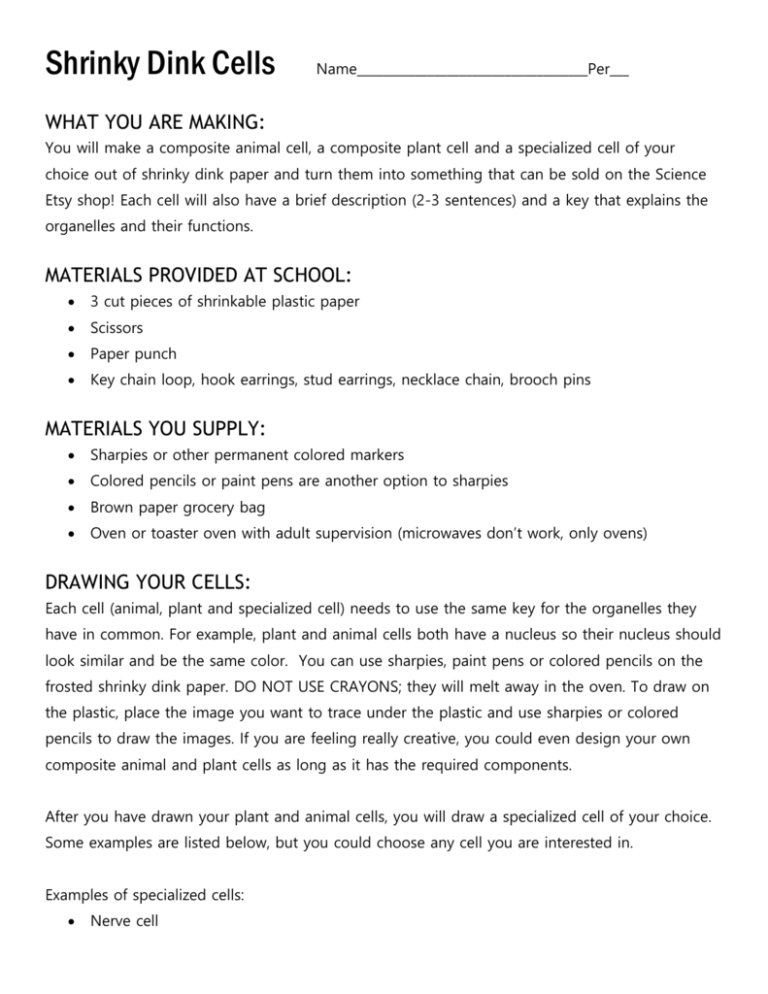
Shrinky Dink Cells Name____________________________________Per___ WHAT YOU ARE MAKING: You will make a composite animal cell, a composite plant cell and a specialized cell of your choice out of shrinky dink paper and turn them into something that can be sold on the Science Etsy shop! Each cell will also have a brief description (2-3 sentences) and a key that explains the organelles and their functions. MATERIALS PROVIDED AT SCHOOL: 3 cut pieces of shrinkable plastic paper Scissors Paper punch Key chain loop, hook earrings, stud earrings, necklace chain, brooch pins MATERIALS YOU SUPPLY: Sharpies or other permanent colored markers Colored pencils or paint pens are another option to sharpies Brown paper grocery bag Oven or toaster oven with adult supervision (microwaves don’t work, only ovens) DRAWING YOUR CELLS: Each cell (animal, plant and specialized cell) needs to use the same key for the organelles they have in common. For example, plant and animal cells both have a nucleus so their nucleus should look similar and be the same color. You can use sharpies, paint pens or colored pencils on the frosted shrinky dink paper. DO NOT USE CRAYONS; they will melt away in the oven. To draw on the plastic, place the image you want to trace under the plastic and use sharpies or colored pencils to draw the images. If you are feeling really creative, you could even design your own composite animal and plant cells as long as it has the required components. After you have drawn your plant and animal cells, you will draw a specialized cell of your choice. Some examples are listed below, but you could choose any cell you are interested in. Examples of specialized cells: Nerve cell Smooth, skeletal or Fat cell (adipose) Amoeba cardiac muscle cell Egg cell Onion cell E. coli bacteria cell Sperm cell Flower petal cell Paramecium cell Skin cell Bone cell Lung cell SHRINKING YOUR SHRINKY DINK CELLS: If you are making a pendant for a necklace, a keychain, or dangling earrings, you’ll need to hole punch your shrinky dink before you shrink it. Leave room outside your cell drawing for the hole punch and cut around your cell carefully. If you don’t need a hole (brooches or stud earrings) then just cut around the outline of your cell. 1. Preheat the oven to 325 degrees. Line a regular cookie sheet with brown paper cut from a clean paper grocery bag. To make it easier to remove the paper after cooking, turn one corner of the brown paper up. 2. Lay your shrinky dink objects, colored-side up, on the paper-lined cookie sheet. Leave space between the pieces so they don’t overlap. (or bake one at a time) 3. Put the cookie sheet in the preheated oven, and bake the shrinky dinks for 1-3 minutes or until they flatten out. Watch them as they back; the shapes will first soften and curl up at the edges, and then settle back down as they shrink. Once the pieces flatten out again, let them bake for another 30 seconds. 4. Remove the cookie sheet from the oven, and carefully lift off the brown paper lining with your shrinky dinks. Press each shape with a folded piece of brown paper for 30 seconds, until they are cool enough to handle at this point you have about 2 minutes when the shapes are still warm enough to further flatten them if needed. 5. If you don’t like the way a molded design turns out, or if the plastic cools and hardens too quickly, you can put it back in the oven for 2-3 minutes to re-flatten it and then twist or shape it again. MAKING YOUR KEY CARD: You need to make a key card that has a picture of each of the organelles listed below and a short description of its function. This card will also have a short description of an animal cell, a plant cell and your specialized cell. Organelles on the key card: 1. Mitochondria 2. Nucleus (nuclear envelope, nucleolus, chromatin) 3. Vesicles (lysosomes, peroxisomes) 4. Endoplasmic reticulum (rough and smooth) 5. Ribosomes 6. Golgi body 7. Vacuole (plant cell) 8. Cell membrane 9. Cytoskeleton 10. Cell wall (plant cell) 11. Plastids (chloroplast, chromoplast, amyloplast) 12. Cytoplasm WHEN YOUR ITEM SELLS: When your item sells online, your teacher will notify you in person and over the school email. The next day, come in to class at lunch or after school to package your shrinky dink cells for shipment! Congratulations on making a sale! GRADING – 20 points in project/test category On time – 1 point deducted each day late Followed directions Key card has 12 organelles drawn with specified information Cards are neat and readable Key card is color coded and match shrinky dink cells Key card organelles are drawn similarly to organelles on the shrinky dink cells Organelle functions are accurate


